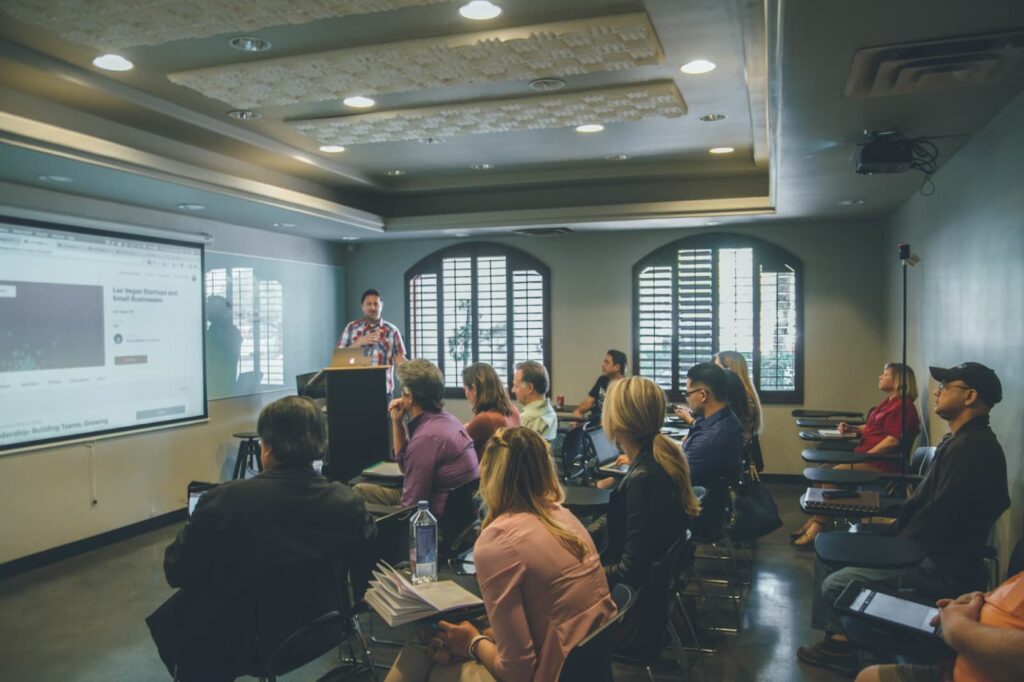
Transitioning to a profession in teaching as a second vocation may be a gratifying and satisfying experience. If you are looking for a different rhythm in your life, an opportunity to make a difference in people’s lives, or a more significant career, being a teacher provides a wide range of possibilities. This book aims to provide you with a comprehensive understanding of the process of transitioning into a teaching career as a second profession. It offers practical methods and valuable insights to facilitate your journey.
Why Consider Teaching as a Second Career?
A significant number of people discover that their initial occupations lack fulfillment and so aspire to pursue a vocation that provides personal happiness and contributes to society.
Teaching can provide a sense of purpose, stability, and the chance to inspire the next generation. Here are the reasons why it might be the appropriate decision for you:
- Teaching provides a sense of fulfillment as it enables you to have a substantial influence on the lives of pupils, nurturing their progress and advancement.
- Stability: The sector of education is characterized by a reliable and unwavering need for highly skilled instructors.
- Growth: A teaching career necessitates a commitment to ongoing learning and professional growth.
- Community: Establishing connections with students, parents, and coworkers fosters a robust feeling of community and inclusion.
If you are contemplating a shift in your professional path, the field of teaching might provide you an ideal chance to harmonize your professional endeavors with your personal beliefs and ambitions. By choosing to pursue a career as a teacher, you may begin on a transformative journey that will leave a lasting impression on future generations.
Steps to Become a Teacher as a Second Career
Transitioning to a teaching career involves several important steps to ensure you are well-prepared and qualified for the classroom. This procedure entails evaluating your existing talents, comprehending the prerequisites for certification, and acquiring hands-on experience. By according to these instructions, you may seamlessly progress towards becoming an educator and begin on a fulfilling and gratifying new profession.
Evaluate your existing skills and experience.
Begin by assessing your current skill set and determining how those talents might be applied to the field of teaching. Several essential soft skills, like communication, organization, and leadership, hold significant value in the classroom. Assess and determine any deficiencies in your knowledge or qualifications that require attention.
Explore the prerequisites for obtaining a research certification.
Teaching certification prerequisites differ from one state to another. Generally, a bachelor’s degree and a teaching certificate are required. Certain states provide alternate certification systems for those transferring from different professions, which might accelerate the process. Conduct thorough research on the precise prerequisites set by your state to guarantee that you fulfill all essential standards.
Select an Educational Career Path
Select the grade level and topic area in which you wish to instruct. Take into account your personal interests, areas of expertise, and the specific requirements of the educational systems in your locality. Typical routes include:
Elementary Education involves instructing young children in a range of disciplines.
Secondary Education refers to the educational level that follows primary education and is often for middle or high school students. It involves specializing in a single field, such as mathematics, science, or English.
Special Education is the process of providing education and support to kids who have specific needs or impairments.
Register for a Teacher Preparation Program
Enroll in a teacher preparation program that is officially recognized and approved, which consists of academic courses and hands-on teaching experience. These programs provide you with the essential pedagogical skills and expertise. Seek for adaptable programs, such as evening or online courses, to meet your existing employment.
Acquiring classroom experience is essential for developing proficiency as an educator. Engage in student teaching or internships to acquire hands-on experience. This will enhance your comprehension of classroom management, lesson preparation, and student evaluation.
Successfully complete the mandatory examinations
The majority of states mandate that aspiring educators successfully complete designated assessments, such as the Praxis examinations, to showcase their proficiency and pedagogical abilities. Ensure complete preparation and approach these tests with utmost seriousness, since they are pivotal in acquiring your teaching certificate.
Submit an application for teaching positions.
Upon obtaining certification, start the process of submitting applications for teaching opportunities. Develop a compelling curriculum vitae and accompanying letter that emphasize your distinctive experience and abilities. Engage in professional networking with educators and actively participate in job fairs to enhance your likelihood of securing a suitable career.
Embarking on a career in teaching as a second profession takes commitment and readiness, although the benefits are highly valuable and worthwhile. By adhering to these instructions, you will embark on a path towards a prosperous and influential profession in education, enabling you to genuinely affect the lives of kids and make a meaningful contribution to your community.
Alternative Routes and Programs
Multiple alternative certification programs have been developed specifically for those seeking to change careers. These programs frequently provide expedited routes to certification and may encompass:
- Teach for America is a program that assigns young graduates and professionals to schools that lack sufficient resources.
- Troops to Teachers is a program designed to facilitate the transfer of military members into educational professions.
- Residency Programs are rigorous programs that integrate study with full-time teaching experience.
Examining these alternate pathways might offer a more adaptable and accelerated approach to attaining certification as an educator. Each curriculum provides distinct benefits that are customized for various backgrounds and experiences, so facilitating a smoother and more accessible transition to teaching for those changing careers. By utilizing these opportunities, you may discover the most suitable alternative for your own situation and begin your path towards a fulfilling vocation in the field of teaching.
Benefits and Challenges
Embarking on a second career in teaching has both advantages and difficulties. Although the trip may be highly gratifying, it also has distinctive challenges that those transitioning careers must navigate. Gaining insight into the benefits and possible challenges might assist you in making necessary preparations for the future.
The main benefits are:
- Job Satisfaction: Numerous individuals who have transitioned into teaching as a second profession often have a greater sense of fulfillment compared to their former occupations.
- Teaching provides a greater degree of predictability in terms of work schedules and vacation time, thereby contributing to a better work-life balance.
- Community Impact: Making a positive difference in the education and development of youngsters is highly gratifying.
However, it is important to take into account some difficulties:
- Initial Adjustment: The process of transitioning to teaching can be demanding, necessitating a substantial change in thinking and abilities.
- Certification Process: Fulfilling certification standards can be a laborious and challenging endeavor.
- Effective classroom management necessitates the cultivation of patience, ingenuity, and robust disciplinary aptitude in order to successfully oversee a classroom brimming with children.
By acknowledging these concerns, you will be able to approach your new profession with practical anticipations and a well-prepared attitude. By adopting a positive mindset and developing effective strategies to overcome hurdles, you will be able to flourish while you undergo this substantial professional transition.

Conclusion
Embarking on a second career in teaching may have a profound impact on one’s life, presenting fresh obstacles and significant benefits. By acquiring knowledge about the process of transitioning into a teaching profession as a second job, you may implement the required measures to guarantee a smooth and prosperous change.
Keep in mind that the process of becoming a teacher may need commitment and exertion, but the influence you may have in this role is immeasurable. Seize the chance to motivate and instruct the next generation; pursuing a profession in teaching may be highly fulfilling.